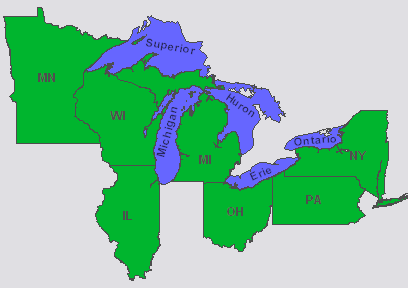
Classification
Scientific name: Noturus flavus
Common name: Stonecat
Domain- Eukarya
Kingdom- Animalia
Phylum- Chordata
Class- Actinopterygii
Order- Siluriformes
Family- Ictaluridae
Genus- Norturus
Species- Flavus
Domain - Eukarya
Being a eukaryote, the stonecat fish contains a membrane-bound nucleus (Hickman et al. 90). Because of the presence of a nucleus this fish belongs in the Eukarya Domain.
Kingdom - Animalia
The stonecat is a part of the animalia kingdom because of many different distinctions. The Noturus flavus is multicellular, lacks cell walls, has an internal digestive system and forms unique cell junctions in the tissues (Myers 2001).
Phylum - Chordata
The stonecat has a rod that helps in the support of its body when moving called a notochord. A notochord is found in most Chordata along with other characteristics the stonecat possesses. Noturus flavus fish have a closed circulatory system, a tail at the posterior end of its body, are triploblastic and have bilateral symmetry (Myers 2001).
Class - Actinopterygii
Because of the special cells and reflective skin layer stonecat fish have they belong in the class Actinopterygii. Most vertebrate classes are categorized in this class because of its wide range of species. Noturus flavus also have fins that attach to the radials (skeletal elements) and they provide the explanation of the connection between the radials and the internal skeleton (Jonna 2004).
Order - Siluriformes
According to dictionary.com, the definition of being a siluriforme is defined by being a catfish. To be a catfish it must have the characteristics of having smooth, scaleless-like skin, and the sets of barbels, or whiskers, on their faces. These barbels act as sets of noses that help detect their environment through touch and chemical cues. Most species of catfish are found in slow-moving tropical freshwater environments and some species even give off strong electrical pulses that are used to kill their prey. Only two of the known species live in a salt water environment (Bruton 1996).
Family - Ictaluridae
They classify into the family “Ictaluridae” because of the location around the world that they live in. These fish are dwellers of freshwater habitats in both North and Central America (Egge et al. 2009). Some common bodies of water that they are found in are the Great Lakes (Walsh et al. 1985)
Incase you don't know where the Great Lakes are located, here is a picture demonstrating the orientation of the Great Lakes in relation to states nearby and around them.
Genus - Noturus
Unique to the classification of Noturus’, the fish in this genus are commonly called madtoms.
Individuals in the genus Noturus are recognized by their very small size and large,well-structured dorsal fin spines and pectoral fin spines (Egge et al. 2009).
When looking at the scientific illustration at the top of this page, the dorsal fin spines would be the fins located on the back of the fish and the pectoral fin spines would be the sets of fins located on its belly.
Species - Flavus
Lastly, this fish in the Noturus genus is distinguished as flavus based off its coloration. The Noturus flavus distinctively is characterized based off the yellow color of its body. In latin, "flavus" means yellow, as according to Latin-Dictionary.org.
------------------------------------------------------------------------------------------------
For a quick, general overview of the Stonecat, feel free to adventure through http://www.flmnh.ufl.edu/catfish/ictaluridae/stonecat.htm and get an even better idea of what the Noturus flavus is all about!
For more in depth information on the classification of the Noturus Flavus visit http://animaldiversity.org.
